
7 minute read
El Dorado’s New High School Wellness Centers
El Dorado’s New High School Wellness
Centers A Place for Teens to Talk, Feel Safe and w hen the Oak Ridge High School Class of 2020 lost a classmate to suicide earlier this year, it shook the entire student body. For students like Diana (not her real name), the new wellness center on campus was nothing short of a lifeline. “I’ve su ered from anxiety and depresGet Help sion since eighth grade, and having someone to talk to right there at the school, right when I needed it, was really important for me,” Diana says. “It reminded me I was not alone, and that there are resources available to help get you through some really hard times.” Diana’s story is a common one among high school students. Guidance counselors across America have been reporting ever-growing numbers of students experiencing more anxiety, depression, stress and personal crises. Locally, the El
Advertisement
Dorado Union High School District (EDUHSD) has not been immune to the problem, and that was the case even before COVID-19 sent everyone home.
According to the American Psychological Association, members of Generation
Z (people aged 15–21) have the worst mental health of any generation currently alive; a fact punctuated by Time Magazine’s recent headline, “More than 90% of Generation Z is Stressed Out.” Closer to home, the California Healthy Kids
Survey, commissioned by the California Department of Education, reported be - tween 33 and 39 percent of high schoolers in the EDUHSD said they’d “felt sad or hopeless feelings” in the last 12 months, and a frightening 19–20 percent— one out of ve—had “seriously considered attempting suicide” in the past year.
by BILL ROMANELLI photos by CHARM PHOTOGRAPHY and DINA GENTRY
Right: Taylor Johnson, Licensed Marriage and Family Therapist, Sierra Child & Family Services (SCFS) and Katie Hacker
Sierra Child & Family Services (SCFS) executive director Barry Harwell
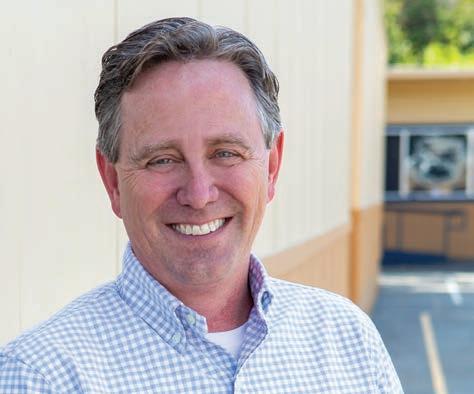
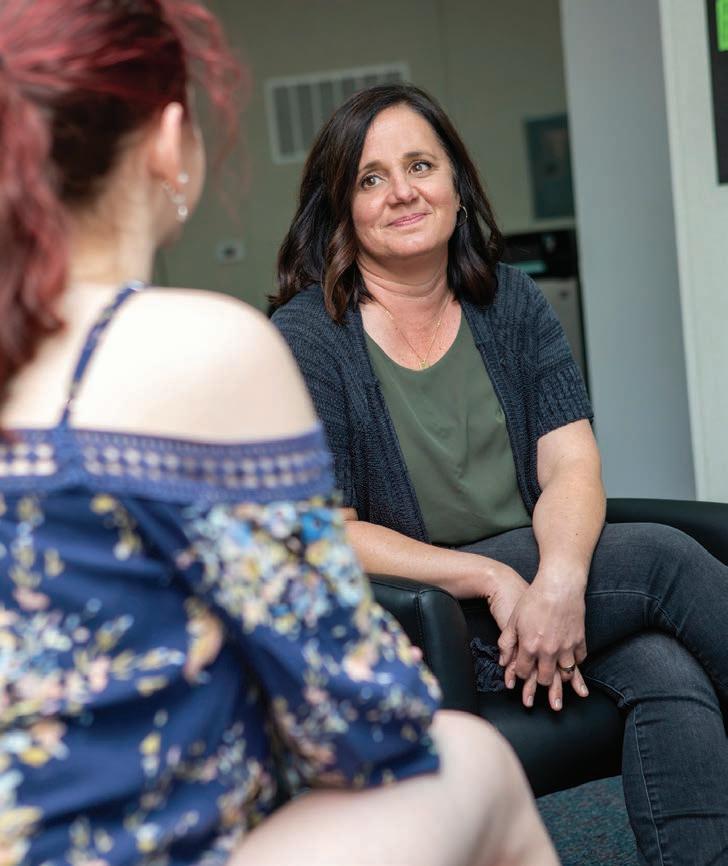
SCFS counselor Carlie Regan
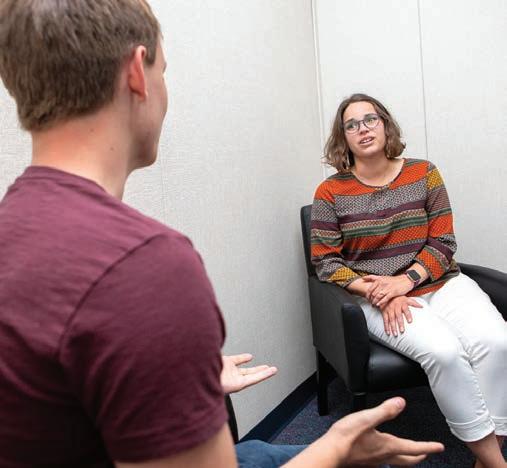

SCFS counselor Katie Hacker shares some time with a student.
Anyone who’s a parent or works in education would guidance counselors recognize students are in crisis (de- be justi ably alarmed by those numbers, considering ned as a situation in which a student may be a danger those are just the individuals willing to be honest about to themselves or others), or who may simply need more it. Even more concerning is the need is growing. help than the guidance o ce is set up to provide, those
It was this need that launched a partnership between students are referred to the wellness center on campus. EDUHSD and Sierra Child & Family Services to estabHowever, that only starts them on a path to mental lish new “wellness centers” at ve campuses throughout wellness. “We’ll have three, maybe four sessions with the the district. Each is sta ed one day a week by two counselors, and are funded primarily from California’s Mental Health Services Act, which makes millions of dollars in grants available to counties throughout the state . “As an organization, we felt we could be doing more to help schools meet students’ crisis needs,” says Barry Harwell, Sierra Child & Family Services’ executive director. “Guidance counselors at schools were being overwhelmed. We wanted to create a program with dedicated people to help guide students and their families into the broader system of community resources and ongoing support.” students, give them some skills to help them deal with what they’re facing, and assess whether there’s a need for more intervention,” says Kim Hughes, clinical direcometimes they just need to talk to someone they can trust, but if they need more, a big part of our s “ e idea was modeled after similar programs in Roseville and Whittier in California. In essence, when job also involves helping them and their parents get the longterm care they need.”
SCFS Kim Hughes, clinical director, Barry Harwell, Carlie Regan, Katie Hacker, Taylor Johnson, Mandy Fiedler, guidance counselor, Oak Ridge High School and Alison Lishman, assistant principal, Oak Ridge High School
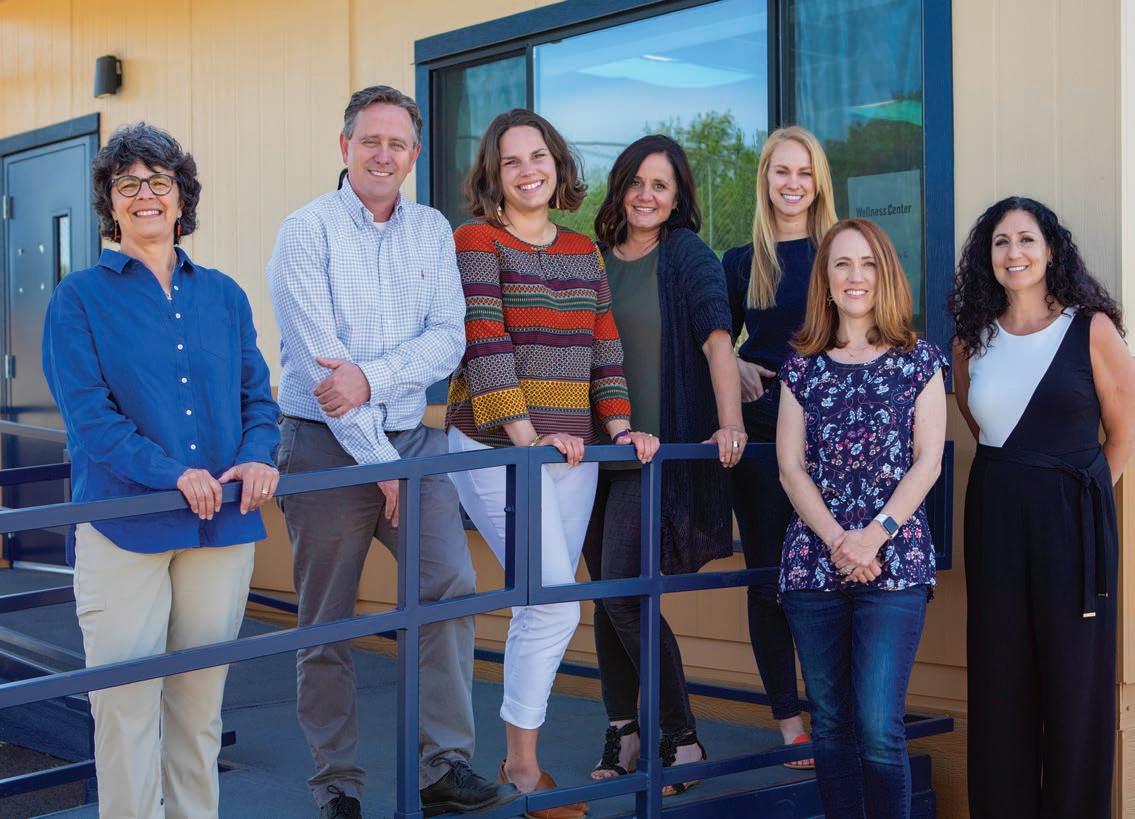
tor of School-Based Mental Health Services with Sierra Child & Family Services. “Sometimes they just need to talk to someone they can trust, but if they need more, a big part of our job also involves helping them and their parents get the long-term care they need.”
In those cases, families can face what seems like a maze of doctors, therapists, support programs and insurance companies, leading to interruptions in the student’s care. Helping navigate this maze quickly is a big part of the wellness centers’ function, and it’s fair to say the team is doing yeoman’s work. So far, more than 400 students have been served by the centers, which only opened this past October.
It’s di cult to pinpoint exactly what’s causing so much mental and emotional distress among today’s teens and young adults. It’s fair to say today’s high schoolers are dealing with challenges unlike anything faced by generations before them. row a pandemic in there, and it only increases everyone’s anxiety.
It’s no surprise then that wellness centers are springing up in high schools and districts across the country and being welcomed with open arms by school sta .
“It’s really been a warm blanket to have these centers and their resources available,” says Mandy Fiedler, who’s worked as a guidance counselor at Oak Ridge High School since 2006. “ e investment being made in these wellness centers to help teach young people skills in resiliency and to deal with hard times as they are about to enter the adult real world is priceless.”
It’s also no surprise that everyone involved is looking for more long-term funding. e current grant of about $208,000 allows for centers to be open one day a week at ve campuses in the district. To operate full time at each school every day would require sustained annual funding just north of $1 million. e need is clearly there, so it begs the question: Will more of this kind of support simply treat the symptoms of whatever’s causing so much anxiety and depression today, or will adequately funding mental health needs start to reverse the trend?
“ e goal here is early intervention. If we can catch kids before they’re in crisis, before they’re in an extreme

Barry Harwell, El Dorado Union High School District board trustees Jessicca Rodgers, David Del Rio, Lori Veerkamp, Kevin Brown (president), Timothy Cary and Superintendent Ron Carruth perform the ribbon cutting this past fall.
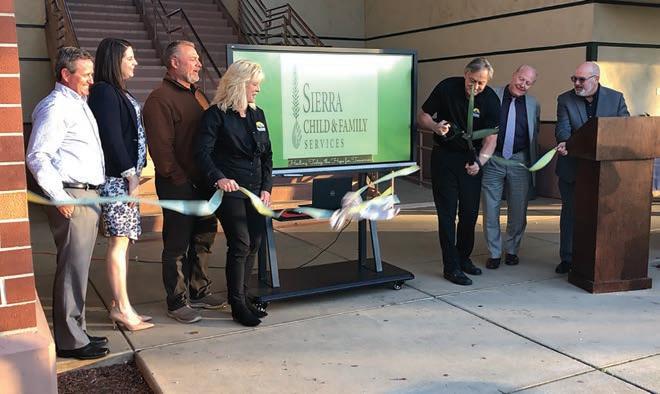

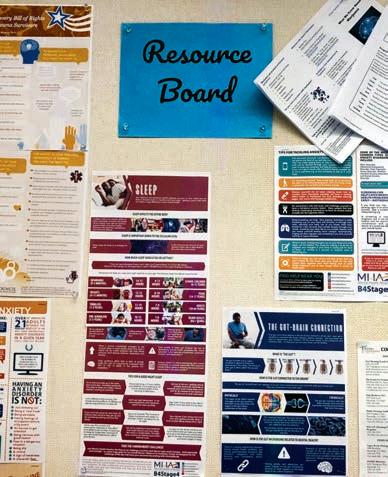
Resources for Parents and Students
● General Wellness Center Contact Number: (530) 280-2009
● EDUHSD Wellness Site: scfswellness centers.org/
● ORHS Teen Wellness: orhs.eduhsd.k12. ca.us/Counseling—Career-Center/ Counseling/Teen-Wellness/index.html
● ORHS Wellness Center email: trojan wellness@eduhsd.k12.ca.us
situation, then we can be more successful at helping them transition into being healthy adults,” says Pam Bartlett, senior director of student success with the EDUHSD. “We won’t have good data for a couple more years, but we will be able to measure success by a decrease in the number of students who need crisis intervention.”
Until then, it’s also important to equip parents as much as possible to recognize if and when their kids need help. at may sound easier said than done, especially since the last people most teens say they want to talk to are their parents, but there are some helpful strategies parents can employ.
“Simply spending time with them is important,” says Taylor Johnson, a clinician, licensed nurse and family therapist who sta s the centers. “And watch for changes in behavior. If they start to get withdrawn, or grades start to drop, or they’re just not being themselves, that’s the time to start asking them questions.”
Importantly, those questions can’t sound like an interrogation or judgment. It’s OK to let kids know they don’t have to talk “right now” and it’s better to ask if they are alright instead of asking “what’s wrong with you?” If you’re not sure where to start, but you’re concerned something’s wrong, call their school guidance counselor and let them know what you’re seeing. ey can help.
“If I could pass any message on to my classmates, I’d tell them don’t be afraid to communicate or talk to someone,” Diana says. “ at was my biggest fear, but once you start opening up it gets so much better. ese wellness centers are a place where you can feel safe, and where you can count on someone to listen.”






